Finally, we see official information on the all-new Porsche 911 Targa. It’s a return to an old-skool look with that iconic rollover hoop. As reported the roof does operate electronically and when you see the videos of it in action after the break we’re sure you’ll agree it’s a clever bit of kit.
Available only in all-wheel drive the Targa 4 gets the 3.4 litre engine from the regular 911, which means it has 257kW/390Nm to play with. The Targa 4S boasts the now familiar 3.8 litre flat six with 294kW/440Nm.
When fitted with the 7-speed PDK transmission the 1560kg Targa 4 can reach 100km/h in 5.0 seconds and 200km/h in 17.5 seconds. The addition of the Sport Plus option brings those times down to 4.8 seconds and 17.2 seconds respectively.
The 1575kg Targa 4S and its 400hp knock off 100km/h in 4.6 seconds, while 200km/h takes 15.5 seconds. Again, similar reductions are available with Sport Plus option, bringing the sprint times down to 4.4 seconds and 15.2 seconds respectively.
Despite saving 20kg in weight with the manual transmission you’ll need to add a few tenths to those performance figures.
The roof can only be opened when the car is stationary and it takes 19 seconds. It’s pretty nifty to see it work. The rear window lifts up, parts of of the rollover hoop fold out of the way, the fabric roof comes to life and is then cleverly stowed away out of sight.
Not sure about you, but we want one!
The new Porsche 911 Targa
Featuring the innovative Targa roof: The world premiere of a modern classic
Stuttgart. World premiere of the 911 Targa: At the North American International Auto Show (NAIAS) in Detroit, Porsche is presenting the latest generation of the extravagant 911 model to the public. This model is the first to combine the classic Targa concept with state-of-the-art roof technology. Just like the legendary original Targa model, the new model features the characteristic wide bar in place of the B-pillars, a movable roof section above the front seats and a wraparound rear window with no C-pillar. But unlike the classic models, the roof segment on the new Targa can be opened and closed at the push of a button. When the button is actuated, the fully automatic roof system stows the convertible top behind the rear seat system, providing a real spectacle. The rear-weighted design of the PTM all-wheel drive fitted as standard is a typical Porsche feature, and guarantees that this latest 911 model also offers optimum driving dynamics on all road surfaces and in all weather conditions.
With these features, the new 911 Targa is presenting itself as a high-quality, innovative remake of the classic vehicle from 1965. The model shares a great deal in common with the 911 Carrera 4 cabriolet models; up to the window line, the technology and body of the vehicles is more or less the same. The combination of the wide rear end that is typical of all-wheel drive models, the Targa bar and the dome-shaped rear window gives the latest 911 an extremely sporty appearance and a low-slung profile.
Two model variants, exclusively with all-wheel drive
As with the predecessor model, the new Targa generation comes in two versions available exclusively with all-wheel drive. The 911 Targa 4 is powered by a 3.4-litre, 350 hp (257 kW) flat engine. Equipped with the Porsche Doppelkupplung (PDK) and Sport Chrono package, this model accelerates from zero to 100 km/h in just 4.8 seconds and boasts a top speed of 282 km/h. Its NEDC fuel consumption figures are between 9.5 and 8.7 litres/100 km, depending on transmission, which corresponds to a CO2 emissions level of between 223 and 204 g/km. The top model is the 911 Targa 4S, which delivers 400 hp (294 kW) from a displacement of 3.8 litres. This model reaches a top speed of 296 km/h and, with the PDK and Sport Chrono package fitted, accelerates in 4.4 seconds. Its fuel consumption fluctuates between 10.0 and 9.2 litres per 100 km, depending on transmission, which corresponds to a CO2 level of between 237 and 214 g/km. With these figures, the model is on a par with the high standard set by the 911 Carrera 4 cabriolet models in terms of engine and road performance, as well as efficiency. Both sportscars are certified for compliance with the Euro 6 emissions standard.
The new 911 Targa models will be launched onto the market in May 2014. In Germany, the 911 Targa costs EUR 109,338 and the 911 Targa S EUR 124,094, inclusive of VAT and country-specific equipment in each case.
911 Targa: Urban fuel consumption 13.9 – 11.8 litres/100 km; extra-urban fuel consumption 7.7 – 6.9 litres/100 km; combined fuel consumption 10.0 – 8.7 litres/100 km; CO2 emissions 237 – 204 g/km; efficiency class: G, F**
Download
- 2014 Detroit Auto Show Press Kit (312kb PDF)
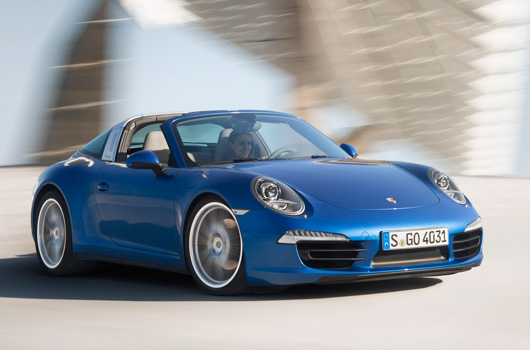
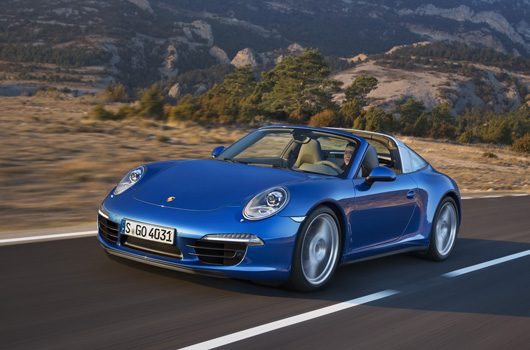
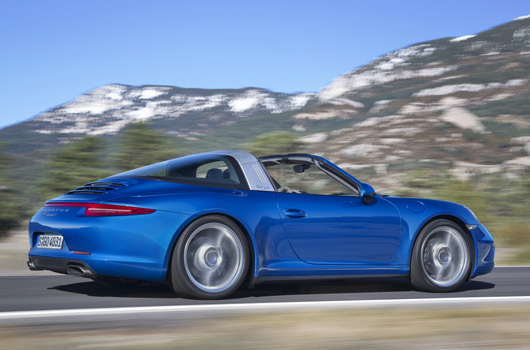
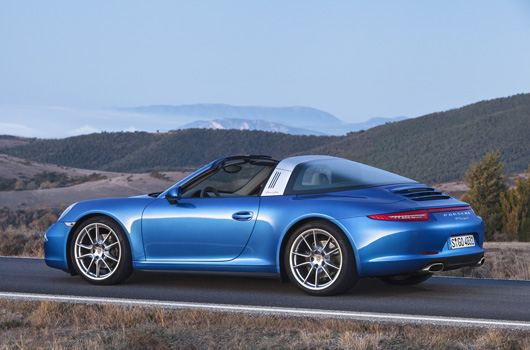
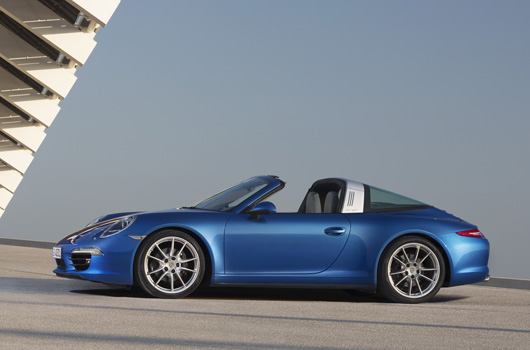
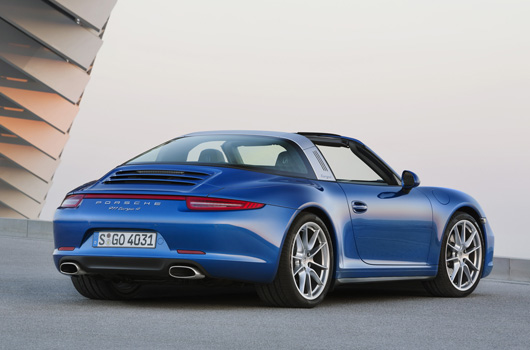
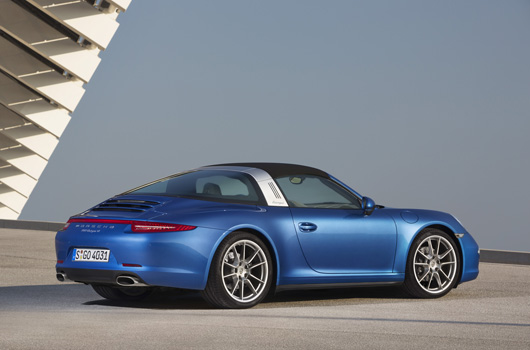
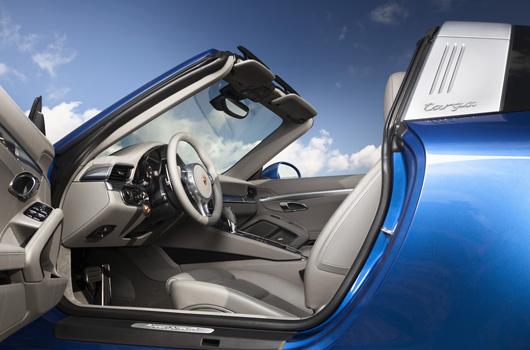
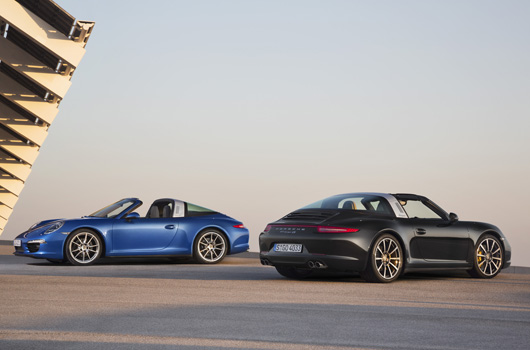
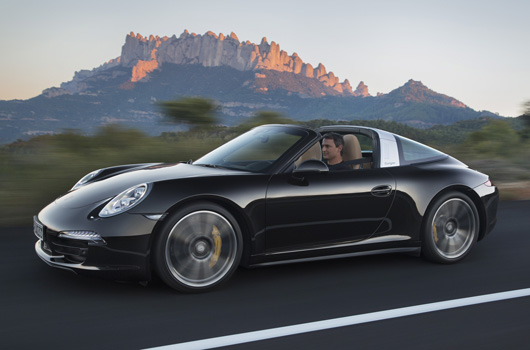
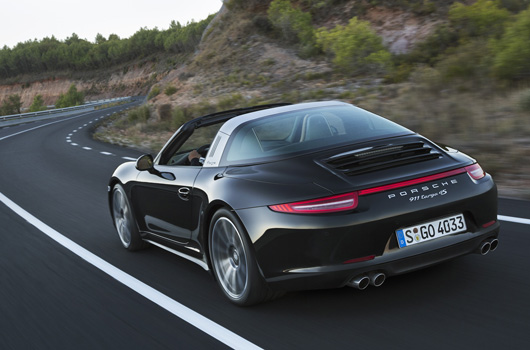
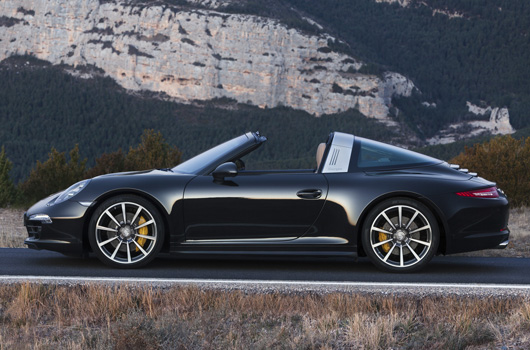
9 replies on “Detroit 2014: Porsche 911 Targa”
Extremely cool!
Buy one, I dare you!
For the same money as a GT3, you know where my money would be!
Do want!
@ Way, wait 12 months and buy one, it will devalue with a BIG D. Oh, forgot to mention, no one seems to buy new ones so that may prove difficult (when was the last time you saw a 2nd hand 997 Targa 4S?).
the targa is cool again, will be popular, if the buffeting doesn’t pop your ears,
Forget pragmatism, and issues such as resale and comparative value. This thing is beautiful and I want one.
[…] has set up a dedicated microsite for the new 911 Targa which features a slider allowing you to open the roof. There’s more, of course, but […]
[…] do you get if you cross a Porsche 911 Targa 4 with a 911 Carrera GTS? Well, a 911 Targa 4 GTS, of […]